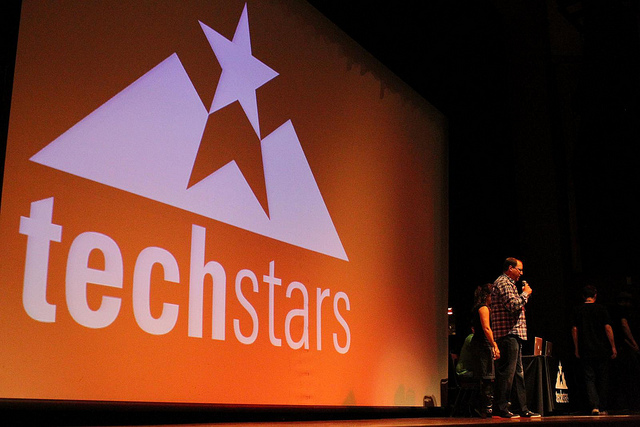Opinions
The Startup Velocity Question: What Hinders Acceleration in VC Funded Companies?

I have been running 1Mby1M since 2010. I find myself saying to entrepreneurs ad nauseam that VCs want to invest in startups that can go from zero to $100 million in revenue in 5 to 7 years.
Startups that do not have what it takes to achieve velocity should not be venture funded.
Experienced VCs, over time, have developed heuristics to gauge what constitutes a high growth venture investment thesis.
>>>Man and Superman: What CAN Be Controlled?
In order to give focus to some major changes she sees on the horizon, Sramana Mitra has written several pieces that grew out of her original article, Man and Superman: Human History Bifurcates. The previous article in this series: Man and Superman: Two Distinct Species. Please share your thoughts and help get the conversation going
It has been 500 years since the Scientific Revolution.
It has been a mere 200 years since the Industrial Revolution.
The pace of change humanity has experienced in the last 500 years, especially in the last 200 years, is immense. Science, coupled with the force of Capitalism, has created an intoxicating pace of change.
We call this change Progress.
Now, humanity faces the critical question: Will relentless Progress eventually lead to the extinction of humankind?
>>>
Featured Videos
Can 1M/1M Help Me Raise Money?
How Does 1M/1M Democratize Entrepreneurship Education?
How Does 1M/1M Democratize Management Consulting?
When Is The Right Time To Join 1M/1M?
Can 1M/1M Help Me With Business Development?
Can 1M/1M Help Me With Market Sizing?
Can 1M/1M Help Me Validate My Product?
Will I Have Private 1-on-1 Sessions In 1M/1M?
How Does 1M/1M Help Entrepreneurs Connect With Silicon Valley?
Mentoring or Consulting?
Why Does 1M/1M Charge $1000 a Year?
Why Does 1M/1M Partner With Local Organizations?
Why Don\’t Mentoring Networks Work?
Why Is It Important To Study With 1M/1M Now?
Dan Stewart Story
Vikrant Mathur Story
Can Solopreneurs Succeed?
There is a myth in the startup eco-system that solopreneurs do not succeed.
This is a MYTH.
Watch this inspiring 1 minute 6 second video of how Sean Broihier navigated his journey:
Man and Superman: Two Distinct Species
In order to give focus to some major changes she sees on the horizon, Sramana Mitra has written several pieces that grew out of her original article, Man and Superman: Human History Bifurcates. Please share your thoughts and help get the conversation going.
In the first segment of this series, I said that human history is about to bifurcate into two distinct classes: the wealthy, powerful, highly educated class that will come to dominate the future; and the useless zombie class that will be the planet’s majority.
Let’s explore this in some detail.
>>>
What Do You Do When You’re Stuck With Your Startup? When Do You Give Up?
Startups are very complicated. Getting to product-market fit is by no means a predictable process. How and when to pivot involves a complicated set of decisions.
First-time entrepreneurs usually are not master strategists.
But persistence is a requirement.
Watch this inspiring 1 minute 23 second video of how Adam Singolda persisted.
>>>
Man and Superman: Human History Bifurcates
I recently wrote a series titled The Future and also gave a talk on The Future of Capitalism.
In those, I said that I am optimistic about the next couple of decades. I believe, strongly, that entrepreneurship and entrepreneurial capitalism can be democratized, and wealth can be created in the middle of the pyramid using capitalistic principles. In the next 2-3 decades, the potential for distributed capitalism is very high and the outcome should be extremely positive around the world. That is the mission upon which my current work with One Million by One Million is based.
However, there is tremendous inequality due to technology and automation on the horizon. In the 30-50 year timeframe and beyond, technology and automation will create tremendous disruption. 60-80% of ALL jobs will, likely, get automated. Now, that is a scary situation.
>>>
How to Increase Your Odds of Getting into TechStars
TechStars rejects 98% of all applications.
Is there a strategy for raising your odds of getting into TechStars?
The short answer is yes.
Watch this 1 minute 22 second video on how Nevin Shetty, CEO of Blueprint Registry, bootstrapped to validation, traction in fact, before applying.
Can You Bootstrap a Unicorn with Your Paycheck?
Let’s say you have a great idea for a startup and you have the ambition of building a billion dollar company — a Unicorn. Should you immediately quit your job and jump in with both feet?
Or should you bootstrap this idea with a paycheck to validation? May be to profitability? Is it even possible to bootstrap a Unicorn startup with a paycheck? Has anyone ever bootstrapped a Unicorn with a paycheck?
>>>
Can You Bootstrap a Unicorn Startup?
Let’s say you have a great idea for a startup and you have the ambition of building a billion dollar company — a Unicorn. Should you look for investors?
Or should you bootstrap this idea to profitability? Is it even possible to bootstrap a Unicorn startup? Has anyone ever bootstrapped one?
I suggest you start by bootstrapping your idea.
That would give you options: you can either bootstrap all the way, or bootstrap first, validate, raise money later. Investors tend to chase validated businesses.
Here is an example of a bootstrapped Unicorn in this 56 second video. Investors have chased this entrepreneur for years and years and years.
Can You Build a Great Tech Company From Outside Silicon Valley?
Let’s say you want to build a great tech company. Should you start by moving to Silicon Valley? Or, can you do it from right where you are, right from your own hometown?
I suggest start validating your idea and building from right where you are. Today, it is no longer necessary for ambitious entrepreneurs to be in Silicon Valley. Great tech companies, even billion dollar Unicorns, can be built from anywhere.
Today, Silicon Valley outsiders can knock over their Silicon Valley competition with proper knowledge, precise strategy. Knowledge will always win over location.
This 1 minute 34 second video proves my point. Have a look.
Can You Compete With Heavily Funded Startups Without Big VC Funding?
There are always competitors who have been longer in the game and who are better funded. But it doesn’t mean they will be the winners in the marathon.
A startup is a marathon, not a sprint.
Gobs of VC money never guarantees a startup’s success. A nimble upstart can beat a well funded competitor with a superior strategy.
Here’s a 1 minute 21 second video that explains further:










